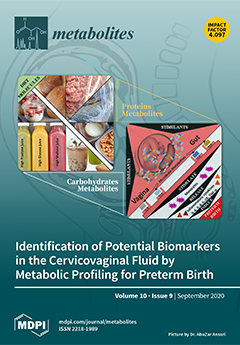In insect, pyruvate is generally the predominant oxidative substrate for mitochondria. This metabolite is transported inside mitochondria via the mitochondrial pyruvate carrier (MPC), but whether and how this transporter controls mitochondrial oxidative capacities in insects is still relatively unknown. Here, we characterize the
[...] Read more.
In insect, pyruvate is generally the predominant oxidative substrate for mitochondria. This metabolite is transported inside mitochondria via the mitochondrial pyruvate carrier (MPC), but whether and how this transporter controls mitochondrial oxidative capacities in insects is still relatively unknown. Here, we characterize the importance of pyruvate transport as a metabolic control point for mitochondrial substrate oxidation in two genotypes of an insect model,
Drosophila melanogaster, differently expressing MPC1, an essential protein for the MPC function. We evaluated the kinetics of pyruvate oxidation, mitochondrial oxygen consumption, metabolic profile, activities of metabolic enzymes, and climbing abilities of wild-type (WT) flies and flies harboring a deficiency in MPC1 (MPC1
def). We hypothesized that MPC1 deficiency would cause a metabolic reprogramming that would favor the oxidation of alternative substrates. Our results show that the MPC1
def flies display significantly reduced climbing capacity, pyruvate-induced oxygen consumption, and enzymatic activities of pyruvate kinase, alanine aminotransferase, and citrate synthase. Moreover, increased proline oxidation capacity was detected in MPC1
def flies, which was associated with generally lower levels of several metabolites, and particularly those involved in amino acid catabolism such as ornithine, citrulline, and arginosuccinate. This study therefore reveals the flexibility of mitochondrial substrate oxidation allowing Drosophila to maintain cellular homeostasis.
Full article






